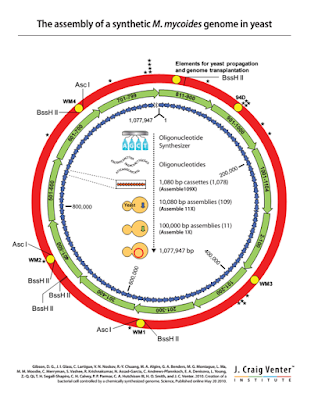*all of the summary inside are made for educational purpose. Sources of findings has been cited as it should be. This summary are based on a seminar and written with some additional information from me as a very unexperienced student of biotechnology. Hope you can find it inspiring as I find it to be when I listened to the seminar of Prof. Rodriguez.
Synthetic Biology and Its Impact on the Future of Biotechnology
by
Prof. Raymond Rodriguez
Department of Molecular and Cellular Biology, University of California, and Chairman, CEO Davis Bioscience Group, Davis, CA USA
Summarized by
Pijar Religia
Biotechnology has advanced through many improvements these past 30 years. Synthetic biology as an interdisciplinary field that uses biotechnology, molecular biology, evolutionary biology, genetic engineering and even computer engineering is one of the rapid developed field and hold the spot of interest in scientific world. Some of the principles of synthetic biology has moved biotechnology into certain direction. The part of using both rational and evolutionary engineering to design, create or redesign existing natural biological system will no doubt reach a certain place that maybe has not been ever thought before. If we see how the trends in biotechnology publications has shifted from terms such as tissue engineering, siRNA, stem cell, RNAi, or proteins to some ‘new’ terms such a genome, genome editing, and CRISPR Cas9, this will surely make us think ‘Where will we take part in this rapidly developed field?’. That’s why we need to pay attention to new breakthroughs and foresee where this field will lead to. Some of these breakthrough are the development of JCVI Syn1.0, CRISPR Cas9 method, and the gene drive.
JCVI Syn1.0 that was synthesized in 2010 may be one of the breaking development this past 5 years as it is the first synthetic ‘bacterium’. The work that has spent
15 years and US$40 million synthesize 1.08 million base pairs and put them into a ‘chassis’ of Mycoplasma mycoides. This cell survives and can reproduce by its own. From this point on, creating synthetic cell that useful to human society may come true in the near future. But, the public concerns are still needed to be considered. Not to say that the very old issue of gene modified food receives so many reaction, both pro and cons. It will not be strange if ‘synthetic cell’ will get numerous reactions as well.
source: J.craig Venter institue
The next development is the genome editing technique, CRISPR Cas9. CRISPR Cas9 which is derived from the very mechanism of immune system that will perform resistance to foreign genetic elements has a quite long history. Recently, it is used frequently in some species either to activate or silence some specific genes. This techniques allows the modification of species genomic information for certain objectives. Similar as JCVI Syn1.0, it certainly will receive many opinions from public because this kind of development towards living things modification always has the advantage and disadvantage, depends on what is done with it. The idea of reviving the species that already went extinct may be one of the useful things that this technique can be applied for
source: wikipedia
All of these developments will finally bring a big question, whether we can apply it to the wild life or not? Gene drive is the introducing of autonomous gene editing machines into nature. Rather than if it is can be applied or not, the big question will be whether human society is ready or not for this kind of advancement. The genome editing techniques or the synthetic cell may not be that harmful if it is kept in laboratory. But, enter them into natural life will be another story although malaria-resistant mosquitos may sounds as a great idea because it may help a lot of malaria threatened communities.
In the end, for me this seminar is very thought-provoking. In one side it shows a very advanced, sophisticated and progressive development of biotechnology, especially in the field of synthetic biology. But, in the other side there is no way to ignore the public opinions. The ‘rule’ of not to build something that cannot spread in the wild life surely cannot stop the curiosity of scientist community. There is the possibility that we may need it far in the future. Rather than the challenge of creating something new, maybe the challenge of develop something that can invite less critics from public society sounds more difficult. But, still it doesn’t stop the fact that the field of biotechnology is indeed a rapid developing field and one time we can solve many problems with this advancement.


Komentar
Posting Komentar